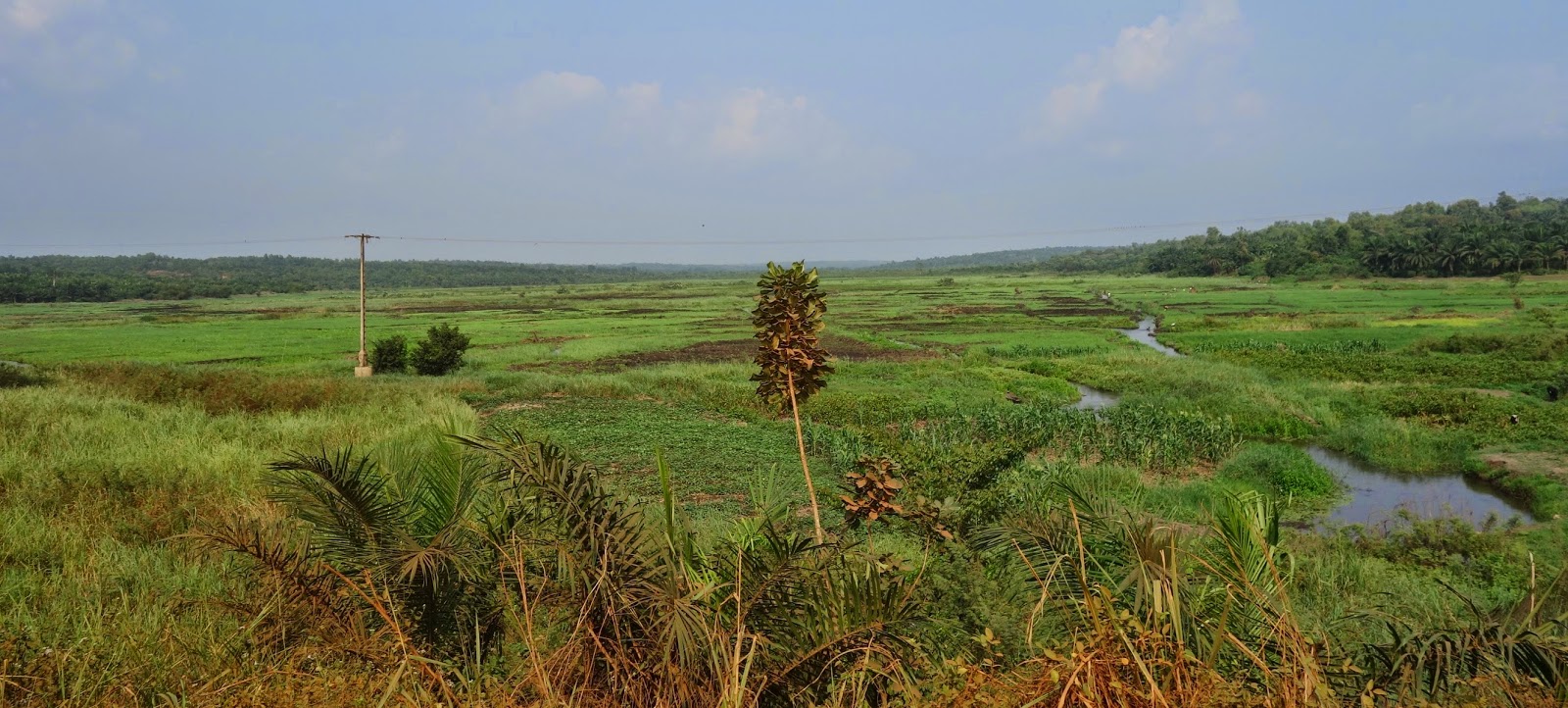A couple weeks ago we went on a faculty field trip for the weekend! A family at school had hosted some Danish archaeologists who have been coming to Benin for over 15 years to conduct research. We were lucky enough to go to their dig sites in Bohicon as well as visit some palaces of former kings of Dahomey in Abomey. Benin was formerly known as the Kingdom of Dahomey and then the Republic of Dahomey until 1975.
Our day did not get off to a good start. Our rental car (actually the 2nd rental car of the day, the first one wouldn't start), broke down about 30 minutes east of Cotonou. We waited on the side of the highway while the mechanics and then the owner came to diagnose and replace a broken fuel pump. We waited for two hours before the car was ready to drive again. Luckily the problem happened close to Cotonou!
 |
| Craig and Nicaise, our driver, checking out the engine. |
 |
| We saw some interesting items being transported by the motos while we were waiting. On some roads, there is a separate lane for the motos to drive in. |
We drove through Benin's capital city, Porto Novo, where Centre Songhai is (see past blog about that experience). Once we were north of Porto Novo, it was new territory for us. Benin has HILLS! And a very fertile valley, lush and green, perfect for growing many crops, including rice. We have heard it said that this is the most fertile river valley in Africa other than the Nile.
 |
| The various shades of green were beautiful to see. Usually what we encounter are various shades of brown/red dust. |
 |
| Donn's talking with Klavs, the entrance to the excavation is in the background. |
 | |
| I got to go down into it first! |
 |
| Heading back up to some fresh hot and humid air. |
 |
| Bags of slag are weighed, spread out, sorted, and photographed. |
He took us to a couple other places of interest regarding this area of Bohicon. He has found evidence of other smelters not by digging, but just by observing. In the streets he has seen the bricks from furnace smokestacks.
 |
| Hopefully you can make out the round shape of the smokestack. This was in the street right next to a stall for hair extensions! |
 |
| Other archaeologists in the group were responsible for excavating a grave-site, which they recently found. They think the hole is the entrance to the grave. (CJ) |
The caves date back to the 17th and 18th centuries.
 | ||
| Teri, Karin, Craig, Debbie, Donn |
 | |
| This is the first cavern that was discovered. |
 |
| Debbie descends into another cavern with many "rooms". (CJ) |
 |
| Peekaboo! (CJ) |
 | ||
| Donn's in one of the larger rooms. (CJ) |
 |
| The acoustics in these caverns was amazing! (CJ) |
 |
| Jewelry from the caverns |
 |
| A remarkably well-preserved clay pot |
(Thanks to Craig Johnston for letting me use your excellent photos!)

No comments:
Post a Comment